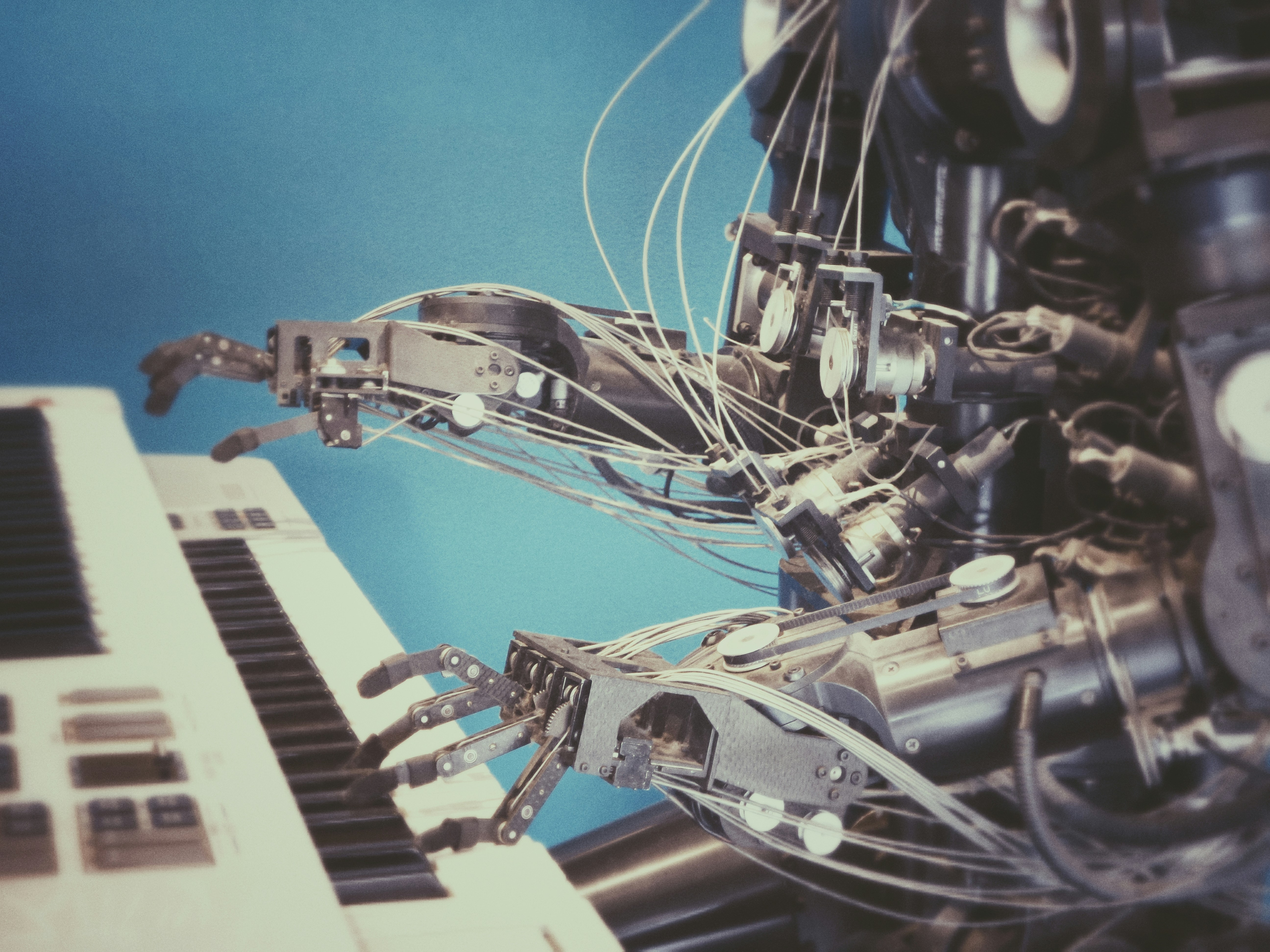How AI is Revolutionizing Healthcare Diagnostics
May 27, 2025
Introduction
In recent years, artificial intelligence (AI) has emerged as a transformative force in various industries, and healthcare is no exception. Among the most promising applications of AI is its integration into diagnostics, where it enhances the accuracy and efficiency of patient assessments. This profound transformation has the potential to improve patient outcomes significantly, streamline workflows, and reduce costs across healthcare systems.
This blog post will explore how AI is reshaping healthcare diagnostics, the medical AI tools at the forefront of this revolution, benefits and challenges of AI in healthcare, and the future landscape of AI diagnostics.
Understanding AI in Healthcare
Defining AI in Healthcare
Artificial intelligence refers to the simulation of human intelligence by machines, particularly computer systems. In healthcare, AI encompasses a range of technologies, including machine learning, natural language processing, and computer vision. These tools analyze vast datasets to identify patterns, automate tasks, and make predictions, ultimately supporting healthcare professionals in clinical decision-making.
The rise of electronic medical records (EMRs), wearable health tech, and the proliferation of health-related data have fueled the development and implementation of AI in healthcare. The ability to process and analyze large datasets enables AI to offer insights that were once unattainable, paving the way for enhanced diagnostics.
The Role of AI in Diagnostics
Early Detection of Diseases
One of the most significant contributions of AI in healthcare diagnostics is its ability to facilitate early detection of diseases. Early diagnosis can lead to swifter treatment and better outcomes, significantly improving survival rates for conditions such as cancer and cardiovascular diseases. By analyzing imaging data, laboratory results, and patient history, AI algorithms can identify subtle abnormalities that might be overlooked by human eyes.
Example: AI in Radiology
In radiology, AI-powered imaging tools can significantly enhance the accuracy of detecting tumors, fractures, or other abnormalities. Technologies like deep learning algorithms allow machines to interpret X-rays, MRIs, and CT scans with remarkable precision. For instance, a study by Stanford University showed that an AI system could identify pneumonia in chest X-rays as accurately as human radiologists.
This early detection capability not only improves patient outcomes but also alleviates the burden on radiologists, who are often inundated with massive volumes of imaging studies. By automating the initial analysis, AI allows clinicians to focus their expertise on more complex cases, enhancing the overall efficiency of diagnostics.
Predictive Analytics
AI enhances diagnostics through predictive analytics, where machine learning algorithms analyze historical patient data to predict the likelihood of specific diseases or health events. By identifying risk factors and trends, healthcare providers can intervene earlier and tailor treatments to individual patients.
Application in Chronic Disease Management
In managing chronic diseases such as diabetes or heart disease, predictive analytics can play a crucial role. AI tools can analyze patient data, including blood sugar levels, activity patterns, and dietary habits, to predict potential health declines. This capability allows healthcare providers to intervene proactively, adjusting treatment plans and helping patients manage their conditions more effectively.
Personalized Medicine
AI facilitates the movement toward personalized medicine, where treatment plans and diagnostic processes are tailored to the individual patient based on their genetic makeup, lifestyle, and preferences. By analyzing genetic information, AI can help identify which treatments are likely to be most effective for specific patients.
Example: Genomic Data Analysis
In oncology, AI tools are increasingly being used to analyze genomic data to identify mutations that drive cancer progression. For instance, companies like Tempus leverage AI to analyze vast genomic databases, providing oncologists with insights that inform personalized treatment strategies. By matching patients with the most suitable therapies, these AI tools contribute to improved outcomes and increased patient satisfaction.
Medical AI Tools at the Forefront
Image Recognition Technologies
AI-driven image recognition technologies have made substantial strides in recent years, improving the accuracy of diagnostic imaging. These tools utilize deep learning algorithms to analyze medical images and identify patterns indicative of various conditions.
Radiology AI Software: Companies like Zebra Medical Vision and Aidoc create software that can analyze imaging studies for specific conditions, such as fractures, tumors, and other pathologies.
Dermatology AI Solutions: Skin cancer detection platforms like SkinVision and MoleScope use AI to assess skin lesions and moles, providing risk assessments based on image analysis and patient histories.
Natural Language Processing (NLP)
Natural language processing technologies enable AI to understand and interpret human language, allowing for improved data extraction from unstructured clinical notes and patient records.
Clinical Documentation Tools: Tools like IBM Watson Health utilize NLP to sift through vast quantities of medical literature, extracting relevant information that can aid in diagnostics.
Chatbots and Virtual Health Assistants: AI-driven chatbots can engage patients in meaningful conversations, gathering symptoms and facilitating preliminary assessments before a clinical visit. For example, Ada Health and Buoy Health offer chatbot services that help users identify potential health issues.
Electronic Health Records (EHR) Integration
Seamless integration of AI with electronic health records can improve the accuracy and speed of diagnostics. AI algorithms can analyze patient data stored in EHR systems to provide insights and flag potential concerns.
Predictive Health Monitoring: Tools like EPIC and Cerner incorporate AI capabilities to monitor patients’ health data, alerting healthcare providers to high-risk patients who may require intervention.
Automated Reporting: AI-enhanced EHR systems can automate report generation, significantly reducing administrative workloads and allowing healthcare providers to focus on patient care.
Advantages of AI in Diagnostics
Increased Efficiency
AI streamlines the diagnostic process, enhancing both speed and productivity. Automated analysis reduces the time healthcare providers spend on manual data review and allows for quicker decision-making. This efficiency is particularly vital in emergency settings, where timely interventions are critical.
Enhanced Accuracy
AI has the potential to improve diagnostic accuracy through advanced data analysis techniques that outperform human capabilities in certain scenarios. Early detection and precise interpretation of data can lead to more accurate diagnoses, reducing the margin of error in clinical assessments.
Cost-Effectiveness
By improving efficiency and accuracy, AI in healthcare can contribute to cost savings. Reductions in misdiagnoses, unnecessary procedures, and extended hospital stays can translate to significant financial benefits for both healthcare providers and patients. Additionally, optimizing workflows reduces operational costs, benefiting healthcare systems.
Challenges and Considerations
Data Privacy and Security
As AI systems rely on vast datasets for training and development, data privacy and security are critical concerns. Protecting sensitive patient information is paramount, and healthcare organizations must adhere to strict regulations to ensure compliance with data protection laws, such as HIPAA.
Ethical Considerations
The integration of AI in diagnostics also raises ethical questions. The potential for algorithmic bias—where AI systems make decisions based on incomplete or skewed data—poses a risk of perpetuating inequalities in treatment and diagnosis. Developers and healthcare providers must work collaboratively to address these ethical challenges and ensure equity in AI-driven diagnostics.
Training and Acceptance
Merging AI with healthcare is not without its challenges. Healthcare providers must be trained to use these technologies effectively, which may require a shift in traditional workflows and mindsets. Building trust in AI systems is essential; providing clarity about how AI contributes to decision-making can alleviate concerns and enhance acceptance among medical professionals.
The Future of AI Diagnostics
Continued Advancements in Technology
Looking ahead, the landscape of AI diagnostics will likely continue evolving, driven by advancements in technology and data analytics capabilities. Future AI systems may become more sophisticated, utilizing data from a variety of sources, such as genomics, wearable devices, and social determinants of health, to create holistic profiles of patients.
Collaboration Between Humans and AI
The future of healthcare diagnostics will likely see a collaborative approach between healthcare providers and AI systems. Complementing human expertise with AI's analytical capabilities can lead to superior patient assessments and more precise treatment decisions.
Potential for Global Accessibility
As AI technologies become more refined and accessible, their application may extend to underserved regions, where medical resources and expertise are limited. AI-powered tools can bridge gaps in healthcare access, enabling remote diagnosis and care in areas where physicians are scarce.
Regulations and Standards Development
As the use of AI in healthcare diagnostics expands, so too will the need for comprehensive regulations and standards to ensure safety and efficacy. Regulatory bodies will play a crucial role in establishing guidelines for AI technologies, fostering innovation while safeguarding patient interests.
Conclusion
Artificial intelligence is revolutionizing healthcare diagnostics, paving the way for enhanced accuracy, efficiency, and personalization in patient assessments. The integration of AI technologies into medical practices offers a promising future for early disease detection, predictive analytics, and personalized medicine, ultimately improving patient outcomes on a global scale.
As the healthcare industry embraces these advancements, addressing ethical considerations and ensuring data privacy will remain paramount. By fostering collaboration between AI systems and healthcare professionals, we can navigate the challenges ahead and create a future where AI becomes a trusted ally in our quest for better health.
In this transformative journey, understanding the implications of AI in healthcare will be critical for stakeholders across the industry. By embracing this technology thoughtfully and responsibly, we can unlock its immense potential to improve diagnostics, enhance patient care, and reimagine the future of healthcare.







